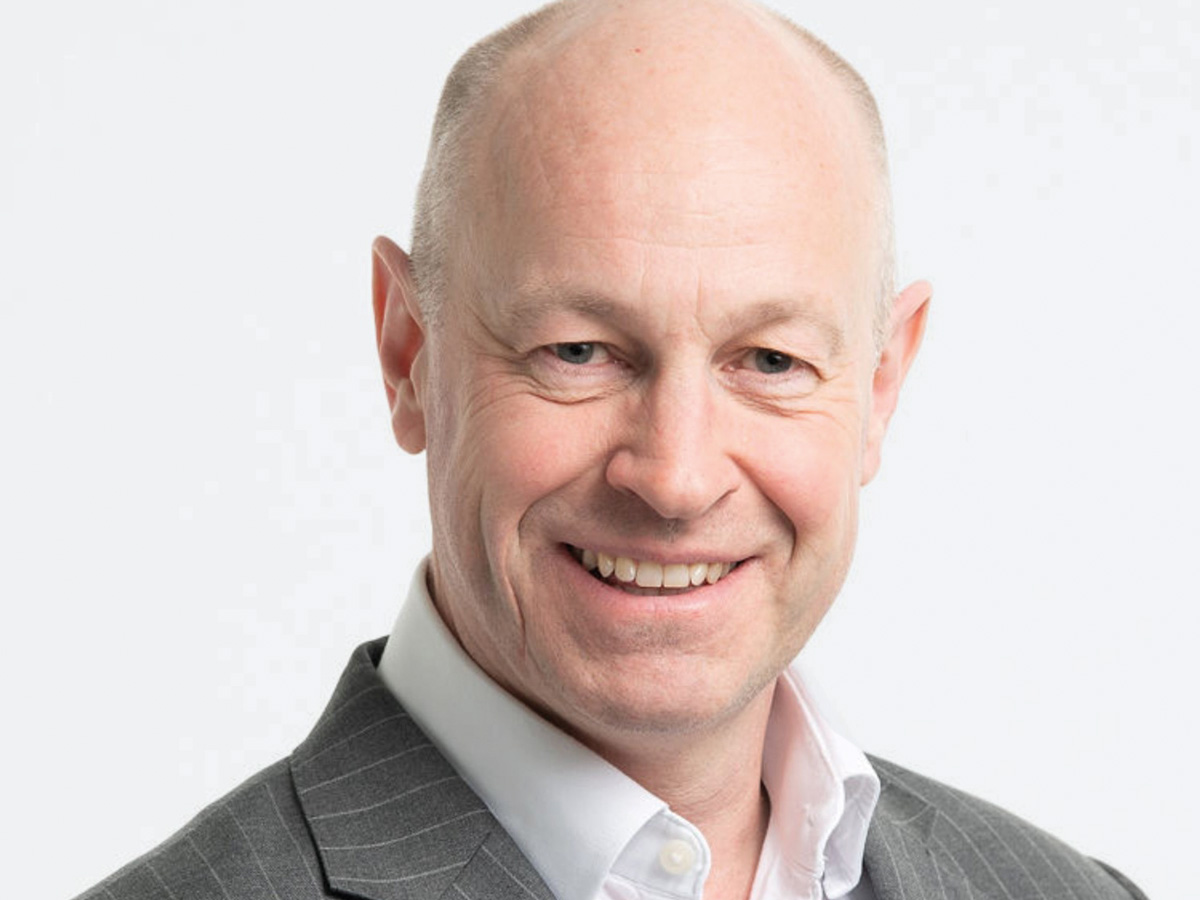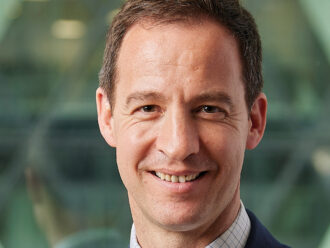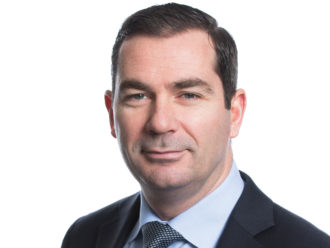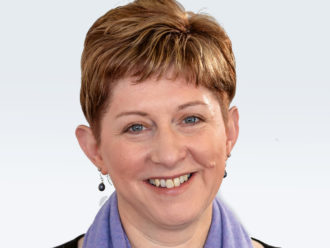We last spoke three years ago. What has happened at the scheme during that time?
We managed to fit in a war in Europe, we lost a few banks in the US and when we last spoke, we discussed a potential fall in inflation. It has been fascinating to see how sectoral banks have tried to tackle inflation, which has caused considerable volatility in markets.
We are seeing a different paradigm for interest rates. It’s almost a normal interest-rate environment – that is, if you are old enough like me to remember a normal environment. That though has been a real challenge.
On a local level, we have seen considerable changes in pension land. Schemes have swung from deficit to surplus and we have seen the impact of the liability-driven investment (LDI) blowup, which is still having a profound effect on many schemes to rebalance their portfolios. I remember coming into the pensions game thinking it was going to be quite dull; it’s been anything but.
Also the last time we spoke we didn’t talk about the rebranding of Brightwell. That has been another, albeit a welcome focus, from what has been going on in the market. We are a year into that and it has been an exciting experience for all of us. So a lot has been happening.
Have you enjoyed your time given all of those events?
Enjoyed is an interesting word. It has been an experience. Some of it has been enjoyable, but it has been a challenge.
I have been impressed by how, as an investment team, we have come together through the challenges to work out where we are and where we want to be. That has been enjoyable. Brightwell has been enjoyable as well. It is doing something slightly different.
How does Brightwell work?
There are a number of angles behind Brightwell. The first is that we have done a pretty good job [with the BT Pension Scheme] and felt that it would be good to try and replicate it with other schemes.
Another driver comes from pension schemes looking at the resilience of their internal teams, many of whom have been in place for a long time and are close to the end of their careers. What is driving sponsors and trustees is this idea of succession and resilience in what they have, as have we.
We felt what we do for the scheme is slightly ahead of the game and can offer that same route to other schemes. And in doing so, we have that resilience of Brightwell for the defined contribution scheme, while realising that an internal team at another scheme may not be as resilient.
We are doing this differently from what is in the market. When we speak to trustees we find a lot of focus is on retaining the culture of the internal [investment] team. Going down the outsourced chief investment officer route makes it difficult to retain the culture and staff. It can be problematic.
What we are offering is a model whereby we incorporate the existing team into our structure and [the scheme] retains the relationship with the trustees or
sponsor but use our investment platform and some of the relationships we have with asset managers and other suppliers.
While it is difficult to explain how, it is a different way of tackling the resilience problem that the industry is increasingly looking at.
How did Brightwell come to be developed?
Brightwell has always existed. It used to be called BT Pension Scheme Management, but if we are opening our doors to other schemes we couldn’t be called that anymore. That is why we came up with the Brightwell name.
It has always been there, but not as a public-facing brand. What we offer to the BT Pension Scheme is the same. It is just the service provider has changed.
Have you therefore spun out your asset owner expertise into asset management territory?
I wouldn’t go that far. Other than an LDI portfolio, we don’t manage assets internally and have no ambitions to start developing products. We are not here to sell asset management.
The differentiator is that we think like a pension fund because that is what we do. It is more leveraging the relationships with the managers we work with and the economies of scale that can come from having larger teams. It is more on that side where we can make a difference.
How have you changed the fund’s investment strategy?
It has been a continuation of where we have been aiming to get to for a while: a cashflow-matched approach. We aim to be cashflow matched by 2034 at the latest. If anything, there is an opportunity to bring that date forward.
That is largely because the returns we can generate in our balanced, diversified credit portfolio will let us achieve our objectives sooner without the need for running some of the riskier assets that we have in the past. It is a continuation, rather than a complete change, but with that flex to do things more quickly.
What I have also been pleased with since taking on the role is integrating what we call a ‘one-portfolio approach’, where you look at the characteristics of an asset, rather than trying to force it into an asset allocation.
In other words, if we think property can provide a secure income stream, then it has a role. So as long as a property provides a reliable cashflow, we will not force ourselves to sell a good asset purely because it is branded as property, for example. That is integrating that one-portfolio approach. We feel that is an experience we can use under the Brightwell business.
What is the fund invested in?
The portfolio has three component parts. We have our equity and equity-like component, and then we have a cashflow-aware portfolio, which is generally credit. The third is LDI, so cash and gilts.
We have significantly reduced our equities to around 30%. Roughly 50%, maybe a bit more, is cashflow aware. The rest is covered by our LDI portfolio.
We are invested in public equity, private equity, have some higher-yielding credit, a little absolute return – although that has been cut quite heavily over the last few years – and we have some real estate and infrastructure. So a typical list of equity and equity-like assets.
Then our cashflow-aware portfolio has high-grade credit, secure income and what we call bond-like assets, which are properties transitioning from a build-and-growth strategy to a hold-and-income stream.
In the coming years you could see the equity-like component shrink and cash- flow-aware built out quite considerably.
You mentioned the gilt crisis of late 2022. What impact did that have on the fund?
The first thing to say is the LDI strategy worked. It has been maligned but it worked for us. It behaved as we expected it to behave. I don’t think anyone could have predicted the rate moves that we saw in just a few hours.
It did mean that we needed to move collateral quickly. We were set up to do that as we manage all our collateral internally.
We have good relationships with our custodian and our underlying managers. It meant that we sold some equity during the gilt sell-off, but we were always on top of those collateral calls, and at no point were we in a stressed position.
I did though personally feel stressed for about three days. It felt uncomfortable in terms of the numbers in the market we were seeing. But when we stepped back afterwards it performed in the way we expected. And the funding positions stayed stable.
Last summer you agreed a £5bn longevity swap. What was the rationale behind that?
As we are a mature scheme, with all the other risks being locked down or reduced, the one risk that proportionally starts looking outsized is longevity. So we are looking at a programme of taking out that risk. That runs along the same timeline to move to a cashflow-matching position, so they go hand in hand. What we are trying to do is take out uncertainty on the assets and the liabilities, which makes funding far more stable.
How did you manage to halve the fund’s deficit?
There were a few things going on. There is the performance of the assets and the contribution from the sponsor. And there was a little movement when real rates went up. We are not entirely hedged, and there is some benefit of that coming through as well. With higher real-rates exposure [the scheme] performed well because of the discounting effect.
We also agreed about two valuations ago with BT that we were going to gradually reduce risk. The range of funding, as we de-risk, narrows. It gives them far more certainty about what they can do with their balance sheet. BT and the scheme benefit from the fact that there should not be any surprises in the numbers.
But the fund’s overall assets have dropped, why is that?
That is mainly the LDI programme. As interest rates went up, the value of gilts went down and the value of the liabilities fell. It is what we would expect in a changing gilts and rates environment.
You are committed to achieving net zero by 2035. Do you feel that is too ambitious?
We set this three-and-a-bit years ago. The original feeling was we needed a target that meant something and focused our minds. If we set a 2050 target, which is arguably more achievable, it probably wouldn’t have us as engaged as we need to be on a 2035 target.
That design feature, if you like, has worked, because we have been forced to understand what net zero means. The industry is much more mature on this now, but net zero can mean different things to different people.





Comments